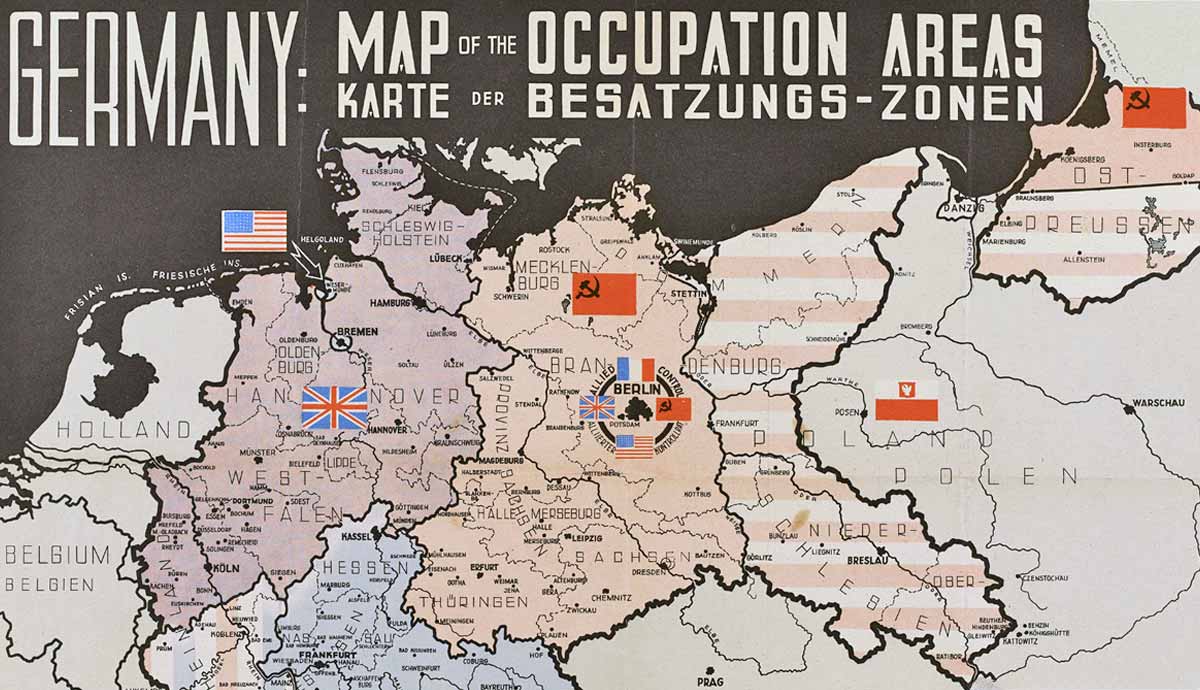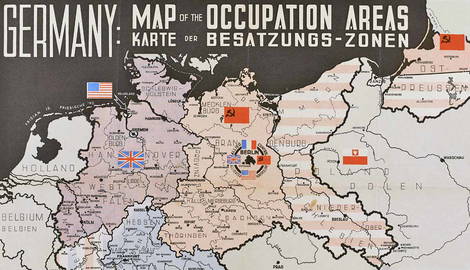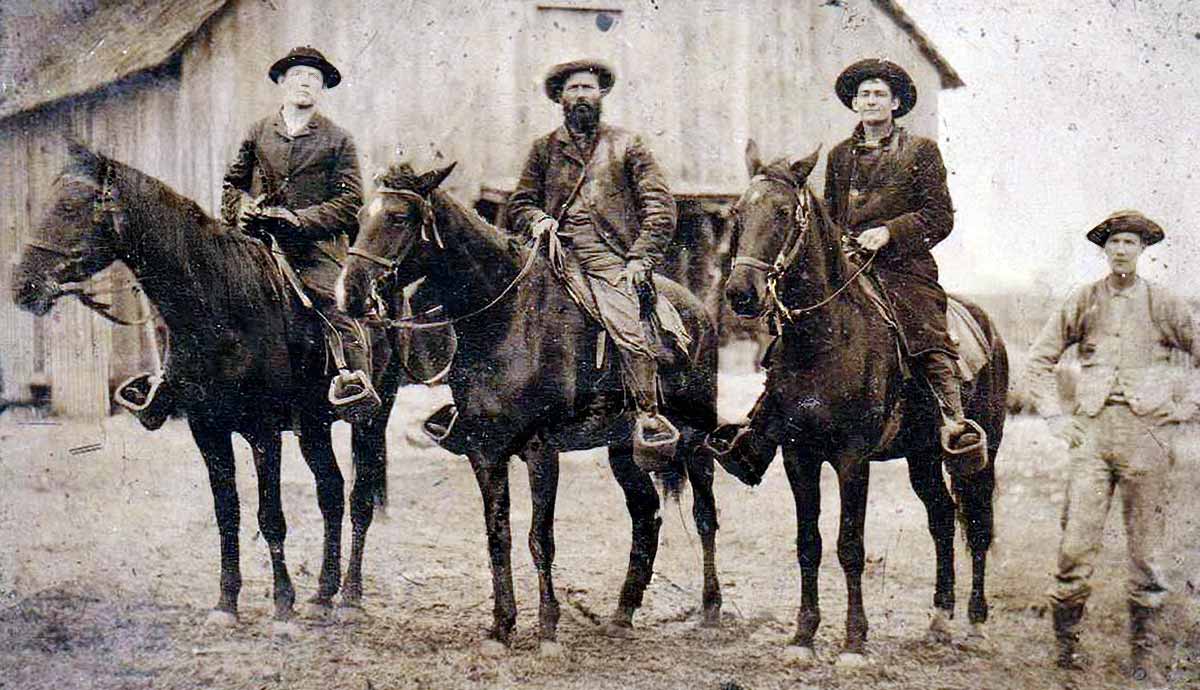
By July 1945, Germany the Allies (Soviet Union, France, Britain, and America) officially divided Germany into four occupation zones. The Occupation’s main goal aimed to dismantle all things Nazi and prevent a resurgence. Concerns over holdouts or even rumors about hardcore partisans called Werewolves persisted. These assassinated several mayors and hid weapons or took potshots at the occupiers. The “Werewolves” resulted from a last-ditch Nazi attempt to liberate Germany post-war. Yet these came to naught as everyday Germans worried more about food, housing, or ex-slave laborers and refugees exacting revenge.
De-Nazification

The screening process to find and rid Germany of Nazi officials began soon in August, continuing for several years. The Soviet versus the Western Allies methods differed but had the same goal. Each destroyed or banned Nazi symbols and regalia in public. Nazi laws were repealed, and their books removed from libraries. The swastika, the most feared and hated Nazi symbol, was obliterated and banned from use.
Nazi leaders, some judged for heinous war crimes, went to trial. Many, like Herman Goering, got hung or received lengthy prison terms. Known Nazis and sympathizers lost their offices, got arrested, and banned from public service. The Soviets deported thousands if too many problems happened in an area. Tribunals of anti-Nazi resistance and cleared citizens scrutinized Germans who came in front of them. Suspected Nazis by the thousands waited inside internment camps until cleared. By 1950, over 400,000 Germans were cleared individually.
Demilitarization

During World War II, Germany’s war-making capabilities proved formidable. To blunt this, the Allies did three things. First, the Allies abolished any armed forces and banned any such organization hinting at this. Second, all soldiers got demobilized, any equipment destroyed, and any military-industrial capability was limited. In 1945, Germany couldn’t resist any of these efforts as the Allies physically controlled the nation.
The Zones

The July 1945 Potsdam Conference’s goal of administering Germany got spelled out. The changes noted previously began after the decision to divide the country into zones for easier control. Britain and America wanted to avoid harsh reparations that led to the rise of the Nazis. Each Allied power administered its zone separately. American efforts used bureaucratic methods to find Nazi members. The Soviets stripped factories, shipping them East for reparations. The Allies did agree that Germany needed to be rebuilt economically and politically. The Allies stripped Germany’s status as a sovereign state. They formed the Allied Control Council, or ACC, for administration and communications. The Allies tried to prevent a Soviet expansion like Eastern Europe. Stalin’s armies rolled over those countries, making them Communist governments. These acted as a buffer against the West, especially against military actions.
The Germans depended on the Allies for food, shelter, and supplies. Each wanted to help Germany recover faster but with no militarization or resentment. The mistakes of the Versailles Treaty never strayed far from their minds. The heavy-handed Soviet partial reparations delayed economic recovery in their Zone. And, with the war over, the West and East fell out as the Cold War rapidly started, making any moves the other took as suspicious.
The Berlin Crisis

Nazi Germany’s capital, Berlin, kept a special status during the Occupation and beyond. It got divided into four zones; the Soviets and the Americans had the biggest ones. The 1948 Berlin Crisis started from rising Cold War tensions. The crisis arose from Soviet fears as the Allies relaxed their grip on Germany. By 1948, the Allies sought to consolidate their zones. The Marshall Plan offered by the Americans aided German recovery, which angered Stalin.
The Soviets knew the Marshall Plan aimed to blunt their influence. In response, the Red Army cut all rail and road access to Berlin, wanting to starve out the Allies. The crisis started on June 12, 1948, and ended in May 1949. The Allies mobilized hundreds of planes, starting the world’s biggest airlift and feeding thousands of Berliners and soldiers. The Soviets ended the unsuccessful blockade, thwarted until 1961.
Occupation Ended

Despite the Berlin Crisis, the Allies pushed ahead, aiding German recovery. The cost of occupation dinted America’s willingness to continue it. A re-established Germany meant no more costs. On May 23, 1949, the Federal Republic of Germany was formed, ending the Occupation. East Germany soon followed only Communist. The Occupation achieved its primary goal – root out Nazism and establish a democratic society. However, its effectiveness is often debated in later years.










